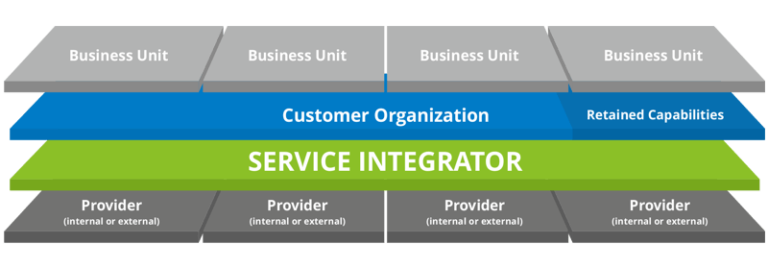What is SIAM?
Service Integration and Management (SIAM) is a management approach that helps organizations stay in control of their internal and external service providers as they gradually move to a more selective and dynamic sourcing model. SIAM is a prerequisite for dynamic sourcing, which in turn makes it possible for organizations to maximize the speed at which they are able to innovate.
SIAM is used in combination with other service management principles and frameworks and has a clear impact on service management tool requirements.

4me and SIAM
4me is the first Enterprise Service Management (ESM) application specifically built to support SIAM. It allows an organization’s internal and external service providers to collaborate seamlessly, while providing real-time insight into the level of service being delivered.

The SIAM Structure
A Service Integration and Management ecosystem has three layers:
- Customer Organization
- Service Integrator
- Service Providers (both internal and external)
Each layer has a role to play to ensure effective end-to-end management of services and the delivery of maximum value to the stakeholders of the customer organization.
Why SIAM Has Become Critical
More and more enterprises are taking a critical look at the tools they use to support their internal support processes. Their CIOs are under pressure to deliver more quickly on key innovation initiatives. Their organization’s viability no longer depends on its ability to innovate, but on the speed at which it is able to deliver innovations. Digital transformation is happening everywhere and it requires knowledge of new technologies. The core business is looking at IT for leadership, but the IT department does not have the experience in-house to realize all the innovative ideas from the core business. It does not make practical or financial sense for a CIO to hire and retain experts on all the new technologies that are needed for the organization’s digital transformation.
Instead, CIOs are adopting a dynamic sourcing model. The goal is to be able to obtain expertise when it is needed from providers that have the skills available and to let go of these providers when the technologies they support are no longer needed, when the level of service they provide is deemed insufficient, or when there is a provider that can provide the required level of service at a better price.

